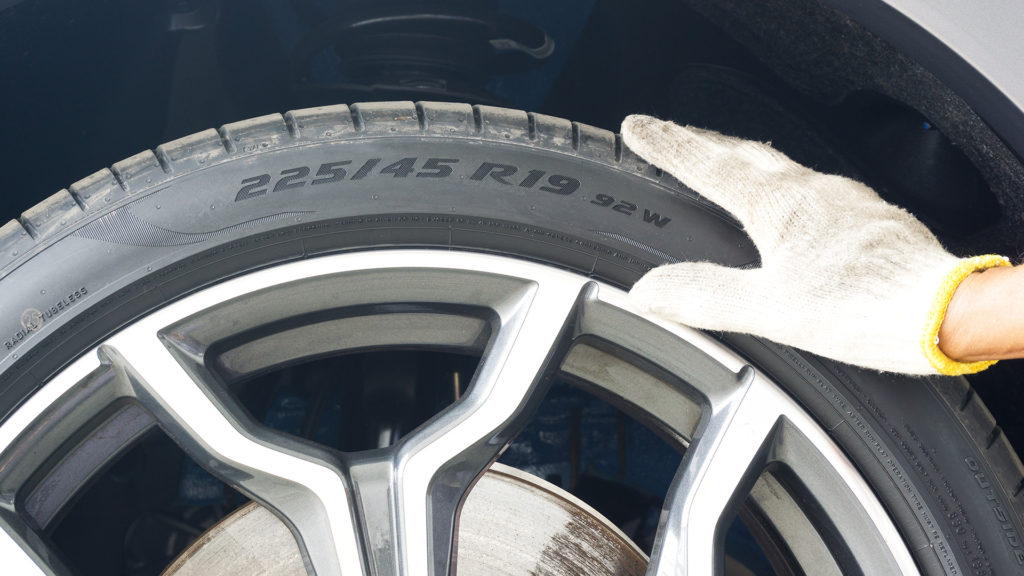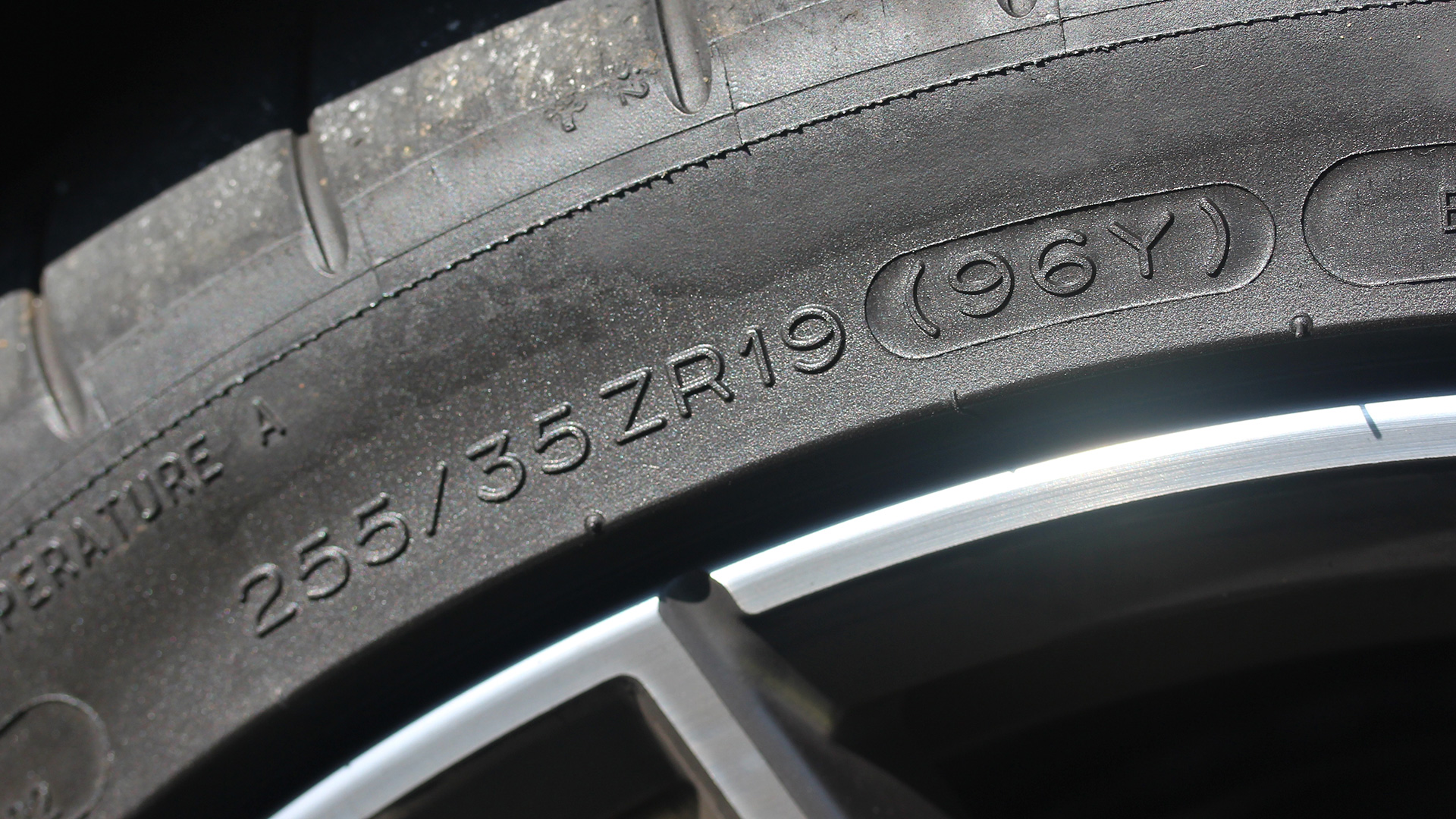If nothing on your tire’s sidewall makes any sense to you, don’t worry, you aren’t alone. What may seem to be a collection of random numbers and letters actually signify the properties of your tires, from its size to its load index. But one of the most important factors is represented by a single letter and it’s your tire’s speed rating. As its name suggests, the speed rating is the maximum speed a tire is safely rated for, but it’s certainly not helpful when it’s designated by a letter and not a number.
To help make sense of all this, we’ve created a table of tire speed ratings and their maximum speeds. Naturally, many of these aren’t commonly used these days.
Speed ratings / maximum speed
| Speed Rating | Maximum Speed (mph) | Maximum Speed (km/h) |
|---|---|---|
| A1 | 3 mph | 5 km/h |
| A2 | 6 mph | 10 km/h |
| A3 | 9 mph | 15 km/h |
| A4 | 12 mph | 20 km/h |
| A5 | 16 mph | 25 km/h |
| A6 | 19 mph | 30 km/h |
| A8 | 25 mph | 40 km/h |
| B | 31 mph | 50 km/h |
| C | 37 mph | 60 km/h |
| D | 40 mph | 65 km/h |
| E | 43 mph | 70 km/h |
| F | 50 mph | 80 km/h |
| G | 56 mph | 90 km/h |
| J | 62 mph | 100 km/h |
| K | 68 mph | 110 km/h |
| L | 75 mph | 120 km/h |
| M | 81 mph | 130 km/h |
| N | 87 mph | 140 km/h |
| P | 94 mph | 150 km/h |
| Q | 99 mph | 160 km/h |
| R | 106 mph | 170 km/h |
| S | 112 mph | 180 km/h |
| T | 118 mph | 190 km/h |
| U | 124 mph | 200 km/h |
| H | 130 mph | 210 km/h |
| V | 149 mph | 240 km/h |
| Z | 149+ mph | 240+ km/h |
| W | 168 mph | 270 km/h |
| Y | 186 mph | 300 km/h |
| (Y) | 186+ mph | 300+ km/h |
What’s up with H and Z speed ratings?
As you might be able to tell, the original idea for speed ratings were to do them alphabetically. The “H” rating however stands out, slotted between “U” and “V” at 130 mph or 210 km/h. It’s widely believed that “H” symbolized “high performance” at one time, which explains why it breaks up the alphabetical naming convention.
As for when the “Z” rating was introduced, the letter was used to represent the highest tire speed rating that would ever be needed (or so they thought), which was 149+ mph or 240+ km/h. As for how above 149 mph Z-rated tires would be, it was never identified. Not surprisingly, the industry eventually realized it would need additional speed ratings as modern luxury and exotics achieved higher top speeds. This is when “W” and “Y” speed ratings were introduced.

Can I mix tires with different speed ratings?
We do not recommend mixing tires with different speed ratings. If you absolutely need to mix tires, put the lower speed-rated tires in the front. It doesn’t matter if your car is front- or rear-wheel drive, having the lower speed-rated tires in the front will help prevent potential oversteer. Obviously, you should abide by the limit of the lower speed-rated tires when driving.
Where do I find my tire’s speed rating?
Most modern tires will have the speed rating as the final letter in the tire size’s code. But if your vehicle is riding on older rubber, you may have to look at your owner’s manual, driver’s side doorjamb, gas door, or glove box for your factory speed ratings. If we take the above image as an example, the tire size’s code is “225/45R19 92W”. That would mean the tire’s speed rating is W, or capable of going 168 mph or 270 km/h.
Speed rating ≠ top speed
Don’t think your tire’s speed rating is your vehicle’s actual speed capacity. Speed ratings are based on a new tire’s performance in lab testing conditions, not your typical roadways. There are a few factors that affect your tire’s actual safe maximum speed: tire inflation, tire condition, cargo load, road surfaces, and even weather. If your tire is underinflated or your vehicle is carrying a heavy load, the maximum safe speed is compromised. In addition, if your tire has been repaired — due to a puncture, for example — its speed rating is likely reduced.
What are the most common tire speed ratings?
On most family sedans and vans, you’ll typically find S- and T-rated tires. Sport sedans and coupes will typically have H-rated tires, while some sports cars will have V-rated tires. V-, W-, and Y-rated tires are most often found on high-performance vehicles and sports cars, along with some electric vehicles. You’ll find that most winter tires will have Q, S, or T speed ratings. On light trucks, you’ll typically find N, P, Q, and R speed ratings.
Are tires with higher speed ratings better?
For the most part, tires with higher speed ratings offer better performance in terms of handling and responsiveness. Those tires typically use softer rubber compounds and have stiffer construction, resulting in overall better steering response, cornering, and even stopping power. There are sacrifices to be made however, since those tires won’t ride as comfortably and generally have a lower treadwear rating. Also, they won’t perform as well in icy or cold conditions.
